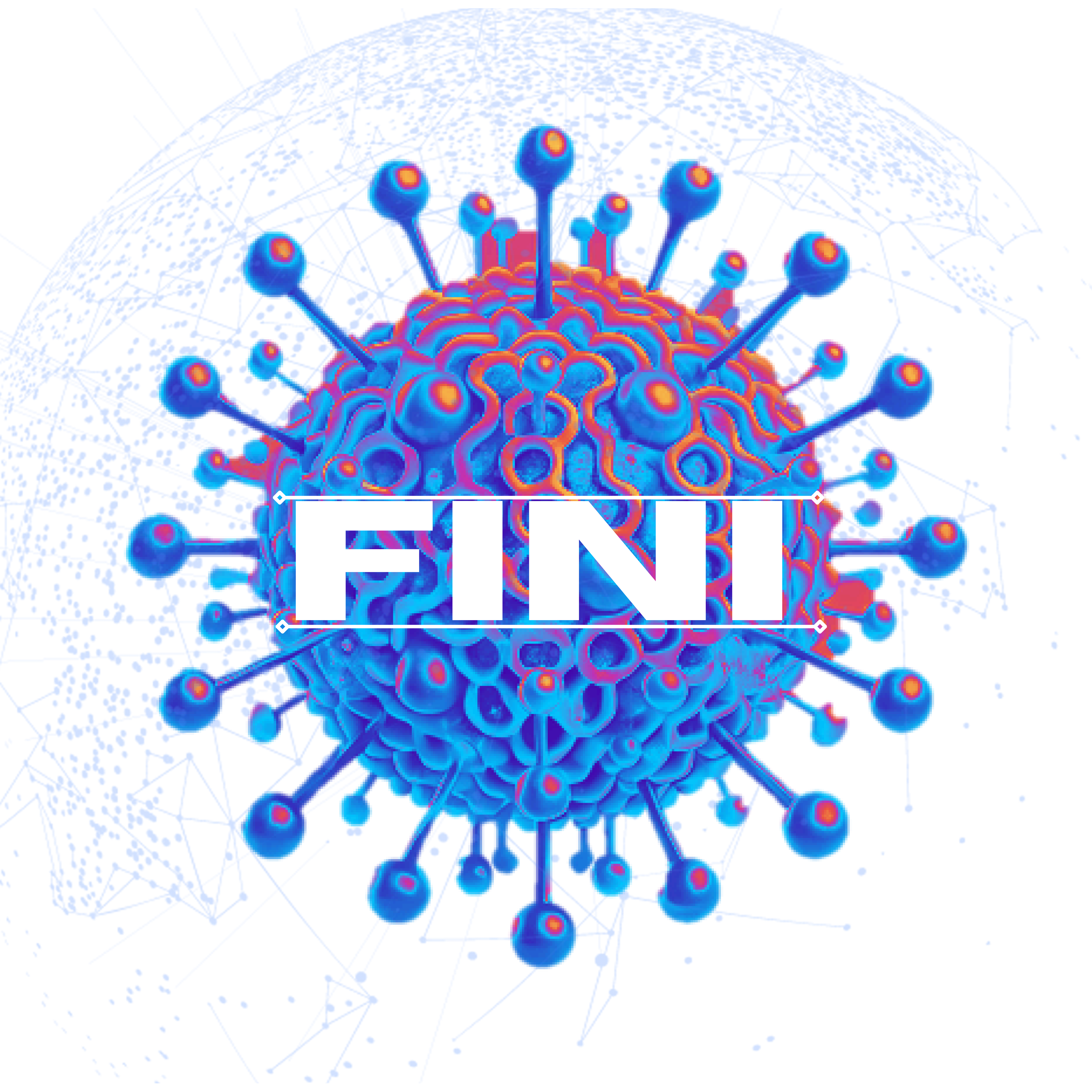RESEARCH
DETAILED PROJECT DESCRIPTION
Main goal of the FINI project is to design the correct therapeutic systems able to eradicate the biofilm-associated infections, so permitting a specific antimicrobial therapy without cytotoxicity and side effects. For this purpose, an exhaustive physicochemical and morphological characterization of biofilm-associated infections produced by antibiotic-resistant microorganisms at different stages of maturation, and the evaluation of variations of their dynamic organization after treatments with innovative antimicrobial nanoparticles (NPs), will be carried out. Infrared (IR) and micro-Raman complementary vibrational spectroscopies will be used to identify the biofilm composition and to obtain information on the different H-bond environments of water within biofilms. Polymeric NPs, positively charged cyclodextrin NPs and gold NPs loading antimicrobial active agents will be produced and if necessary functionalized to obtain systems able to recognize molecular targets into the biofilm selectively, blocking its production or causing the breaking and dissolving the formed ones. NPs will be fully characterized in order to evaluate the effects of temperature and different formulative parameters on their stability. The physicochemical interactions among the antimicrobial active ingredients and the realized NPs will be also investigated. Transmission and Scanning Electron Microscopy related techniques will be employed to investigate the morphology of bacteria attached on the biotic or abiotic surface and for enumeration of adhered bacteria before and after antimicrobial treatments. In vitro/ex vivo studies on cell lines and on explanted tissues infected with antibiotic-resistant biofilm-producer bacteria (BPB) will be performed to investigate the mechanism of action, the efficacy and the anti-inflammatory activity of the NPs


This WP is aimed at i) ensuring effective coordination of the project and implementation of efficient administration; ii) facilitating of communication between the partners involved; iii) guaranteeing of local ownership of the project results; iv) monitoring of potential risks and guarantee of the necessary execution of the plan emergency; v) organization of the required documentation and timely communication, resolution of financial problems and control of the appropriate use of resources; vi) supervision of legal compliance
for all project activities.

physicochemical characterization and microscopic observation of biofilm-associated infections produced by drug-resistant bacterial strains during the phases of development and maturation.
Biofilms, produced by selected strains on abiotic and biotic surfaces, will be characterized by a dynamic point of view through IR and Raman spectroscopy and microspectroscopy, in non-invasive and complementary way, in order to monitor in situ, via the fingerprints spectrum of biomolecules, not only the initial stages of biofilm formation but also the subsequent growth of the layers.
This will be possible observing the modification of the vibrational bands characteristic of proteins, nucleic acids, and polysaccharides in comparison with environmental condition changes such as temperature and hydration level. Transmission (TEM) and Scanning (SEM) Electron Microscopy, also associated with spectroscopic techniques [such as Energy Dispersive X-rays spectroscopy (EDX)],
will be employed to investigate the structural and chemical properties of biofilms. Neutron Tomography (NT) experiments will be planned to attempt the 3D visualization of biofilm development
DEVELOPMENT, PHYSICOCHEMICAL AND MORPHOLOGICAL CHARACTERIZATION OF ANTIMICROBIAL NANOPARTICLES (NPS)
DEVELOPMENT, PHYSICOCHEMICAL AND MORPHOLOGICAL CHARACTERIZATION OF ANTIMICROBIAL NANOPARTICLES (NPS)

NPs, made of marketed molecules and/or of new synthesized ones, loading antimicrobial active agents, will be designed to permit the penetration of the therapeutic dose into bacterial cells, eradicating infections without cytotoxicity and adverse effects.
Furthermore, we will develop nanoparticulate carrier loading antimicrobial agents and natural anti-inflammatory agents for multi-drug threrapy.
A complete physicochemical and morphological characterisation of the produced systems is necessary to understand the type of interaction between the drugs and/or cyclodextrins and the polymer matrix, and the role these interactions play on the loading capacity and therapeutic efficacy of the nanoparticulate delivery systems. Based on the data obtained, the most efficient systems will be selected for a 2D correlation analysis (2D-COS) of the IR data, collected as a function of T, obtaining information on the temperature-dependent dynamic evolution. In addition, the effect of temperature on the dynamics of the complexes will be complemented by elastic and inelastic neutron scattering measurements conducted at the European Large Facilities
CHARACTERIZATION OF BIOFILM TREATED BY NPS
CHARACTERIZATION OF BIOFILM TREATED BY NPS

Physicochemical evaluation and microscopic observation of biofilm response to the treatment with the NPs.
SEM and IR and Raman techniques will be used to investigate the spatial patterns modified by the interaction of antimicrobial NPs with biofilm, to identify those regions of the biofilm reached by the antibiotic.
IN VITRO/EX VIVO ASSAYS

The aim of this WP is to evaluate the antibacterial and anti-biofilm activity of antimicrobial-loaded NPs against drug-resistant bacterial strains using in vitro tests and culture models. A further aim is to assess the cytotoxicity exerted by NPs and the occurrence of apoptosis and/or oxidative stress. The proposed model consists of corneal epithelial cells infected with biofilm-producing strains isolated from ocular infections. The model will be treated with different types of NP in order to evaluate the antibacterial activity of NPs in terms of biofilm inhibition or eradication. Finally, it is planned to evaluate the anti-inflammatory potential of NPs on infected cell lines and on infected corneal tissues. In the above-mentioned model, the anti-inflammatory properties of NPs will be studied by quantifying cytokine production by ELISA.
DISSEMINATION
DISSEMINATION


